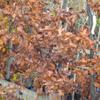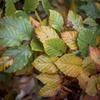Great choice! We're adding your items to the basket and working out what else you might need to plant it.
Purple Beech Fagus sylvatica Purpurea
Example photos only. Size, stem height and habit may vary.
Please contact us for photos of current stock.
Select plant type
Quantity
British Grown – The British Grown logo denotes plants and trees that have been both propagated and grown in the UK. Read more
Product Description
FAGUS SYLVATICA ATROPURPUREA – Purple Beech
Characteristics
Copper or purple beech is given the botanical name Fagus sylvatica Atropurpurea Group (from the Greek for purple), which covers a range of purple-leaved beech plants that occur as natural variations in a batch of seedlings. The colour can vary from dark purple to a more purple tinted dark green.
In all its forms, purple beech is a very large tree, growing to 30m (100ft). Their size and deep colour make purple beech trees very conspicuous in the summer landscape.
Purple beech also makes a colourful hedge or can be pleached for a dramatic statement planting.
Where to grow
Beech can be difficult to establish. Unlike most trees, it is only after bud burst that root growth, for that year, begins. The first roots to appear are very thin (with a diameter of less than 0.5 mm). Later, after a wave of above ground growth, thicker roots grow in a steady fashion.
They also prefer humus rich, light or medium soils and will not tolerate waterlogged root zones for any length of time. However during the establishment phase their root systems must not be allowed to dry out and regular watering is needed. This balance is crucial to planting success.
Did you know?
Not always appreciated, the late Alan Mitchell, well respected dendrologist and author of books on trees, said of purple beech: "They flush brownish-pink but soon assume the heavy, dark, blackish purple colour which disfigures much of our landscape. Grossly overplanted in villages, rectory gardens, churchyards, parks and all commemorative plantings." Obviously not a fan!
Purple leaves usually have high anthocyanin concentrations relative to chlorophyll, giving them their characteristic colour. Since the anthocyanin absorbs green light (while chlorophyll reflects green light), and reflects reds and purples (chlorophyll absorbs these light colours), the leaves appear purple to our eyes. The chlorophyll is still there, but it is masked by the higher concentration of anthocyanin.
If you look at the leaves of a purple plant that is growing in the shade, you will see the leaves look muddy-purple or even green. In the shade, the leaves produce more chlorophyll to assist in photosynthesis, so the purple colour is not as strong by comparison.
Features
-
Mature Height
- Very Large - 20 metres+
-
Spread
- 15-20 metres
-
Shape / Habit
- Spreading
- Broad headed
-
Growth Rate
- Medium
-
Soil Type
- Clay
- Chalk/Limestone
- Light sandy
-
Sun Levels
- Full sun
- Partial shade
-
Difficulty / Hard to Grow
- Medium
-
Evergreen / Deciduous
- Deciduous
-
Autumn Colour
- Orange
- Purple
-
Leaf Colour
- Purple/Red
-
Foliage
- Dense
- Small leaves
-
Uses
- Screening
- Parkland Tree
- Garden Tree
- Country/Farmland
- Good Firewood
- Flower Arranging
-
Hedging
- Native Hedge
- Holds its leaves
-
Native / Naturalised
- Native
-
Season
- Summer
Aftercare
Pruning Fagus Sylvatica Purpurea
Fagus sylvatica Purpurea will eventually become a very large tree, so train gradually to create a sturdy frame that is well balanced. Do not over prune when young, instead shorten laterals in the first year and then remove in the second. A clear stem of up to 3m can be achieved over a number of years. New foliage may revert to a plain green colour. Prevent these stems from establishing by removing them fully.
If grown as a hedge, clip annually in midwinter.
What time of year is best for pruning? Prune in winter when the tree is dormant. Pruning is possible in summer if necessary.
For the continued healthy growth of your trees, shrubs or hedging it is vital that you follow the advice below.
Watering
The main reason that plants die within 12 months of having been planted is lack of water. It is essential throughout the spring and summer, to give a heavy enough watering to enable the water to penetrate right down to the deepest root level of the tree. In hot dry spells give the equivalent of 2 bucketfuls every three days.
Weed Control
One of the most common causes of lack of water is competition from grass. When trees are first establishing, the grass roots would be at the same level as the tree roots and are far more efficient at taking up water and thus choke the tree. It is vital that for at least 3 years after planting your tree or hedge has a circle or strip one metre wide completely free of grass.
- Mulch mats are an effective way to stop grass and weeds, although they will require a careful eye to make sure they continue to work. After clearing the ground around the tree, firmly fit the mat by tucking the edges into the soil and put a thick layer of bark mulch on top of this. Be careful not to allow the woodchip to touch the stem as it can cause rot.
- Weed killer is very effective, however it is harmful to the environment. Organic weed killers usually do not kill roots. Weed killer needs to be applied each year for the first 3 years, preferably when the tree is dormant, or just once before applying a mulch mat.
- Mowing or strimming is NOT an answer to the problem. Each time you mow, the grass will grow back more vigorously and strimming invariably leads to lacerated trunks.
Staking
If trees are not correctly secured they will rock in the planting pit. Roots not firmly in contact with the soil are unable to take up moisture and nutrients, resulting in die back or death of the tree. Check, particularly after windy weather, that stakes are still solidly in the ground keeping the base of the trunk firm. The purpose of the stakes is to anchor the roots. Flexing in the wind, higher up the trunk, is not necessarily a problem if the roots are firm.
Bellow is list of the correct system to use to secure your trees.
- 40/60, 60/80, 80/100 whips - Unless rabbit/deer problem no need to stake.
- 100/125, 125/150 1.2m Cane and Easi tie.
- 150/175 1.2m square stake and a buckle tie and spacer.
- 175/250, 6/8, 8/10 15L 1.65 Tree stake and a buckle tie and spacer.
- All larger trees. 2 x 1.65 Tree stake and cross rail with 38mm cushion spacer and 1m of 38mm strapping.
Ties
Always use our recommended tree ties or strapping. These are designed and manufactured with the correct amount of give to hold the tree firm without strangling it. They should be checked at the end of each growing season for adjustment as the trunk thickens. Non proprietary materials such as baler twine will cut into the bark and should not be used.
Protection from Animal Damage
Rabbits, deer, sheep, cattle and horses can all potentially damage trees. Ask us for advice on the most appropriate guards for your trees or hedge. Squirrels are also a terrible pest when trees get to about 20ft tall but there is no protection available.
Are the delivery costs the same no matter how many plants I order?
Yes the delivery costs stay the same no matter how many plants you have on your order. They are worked out based on your distance from our nursery and can be found here.





